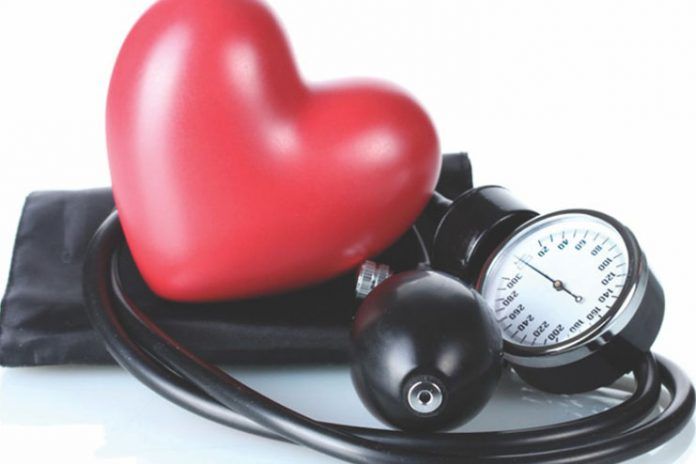Affiliate Disclaimer
Some links in this article are affiliate links. We may earn a small commission if you make a purchase through these links, at no extra cost to you. We only recommend products we find useful to our readersHigh blood pressure or hypertension is a common condition in which the long-term force of the blood against your artery walls is high enough that it may eventually cause health problems, such as heart disease. There are plenty of Natural treatment for hypertension is available which can help to a great extend to control it.
Blood pressure is determined by the amount of blood that your heart pumps and the amount of resistance of blood to flow into your arteries. The more blood your heart pumps and the narrower your arteries, will result in higher the blood pressure.
High blood pressure (hypertension) can be there for years without any symptoms even then it may damage the blood vessels and your heart. Uncontrolled high blood pressure can increase the risk of serious health problems, including heart attack and stroke. High blood pressure may develop over the years and it can affect nearly anything eventually.
There are many natural treatments available for hypertension, which may be useful in controlling the high blood pressure. Below are some of them which can be beneficial.
1. Garlic
Garlic can lower the blood pressure, particularly systolic blood pressure. The active constituents in garlic are thought to be the sulfur-containing compounds including allicin, which will be acting on the body’s nitric oxide system to relax the arteries and lower the systolic blood pressure. Garlic isn’t safe for use with many common medications and conditions, hence consult your medical professional before consuming it.
2. Fish Oil / Omega-3 Fatty Acids
Omega-3 fatty acids are found in fish and some plant foods. They may help to lower the blood pressure. The omega-3 fatty acid DHA have greater benefits than EPA (eicosapentaenoic acid).
3. Hibiscus
Hibiscus tea (from the plant Hibiscus sabdariffa) is associated with reduced systolic and diastolic blood pressure. Two studies comparing hibiscus extract to angiotensin-converting enzyme (ACE) inhibitors (captopril or lisinopril) showed reductions for hibiscus tea groups, the effects were generally less in those of the ACE-inhibitor groups. The manganese, iron and copper content may exceed the recommended limits at high intakes.
4. Chocolate / Cocoa Extract
Eating dark chocolate or chocolate or cocoa products enriched with flavanols can slightly lower blood pressure. Chocolate can affect the nitric oxide system resulting in vasodilation and lower blood pressure. It may inhibit the angiotensin-converting enzyme. Chocolate also contains caffeine and sugar, aand large amounts of caffeine can increase blood pressure and the sugar content may affect blood sugar levels.
5. Magnesium
The mineral magnesium may help to lower the blood pressure. Magnesium may be of benefit to people with high blood pressure who are deficient in magnesium. Intravenous magnesium sulfate is commonly administered for preeclampsia and eclampsia in pregnancy.
6. Vitamin D
It is found naturally in fish, eggs, fortified milk and cod liver oil and is produced naturally during the exposure to the sun. Low level of vitamin D may have a role in developing high blood pressure. Usually blood pressure is often elevated when there is reduced exposure to sunlight/vitamin D.
7. Green Coffee Extract
Green coffee refers to raw coffee beans that have not been roasted. Chlorogenic acid, a component in the green coffee extract, may lower blood pressure. Chlorogenic acid is present in roasted coffee, but roasted coffee consumption is found to increase blood pressure. Ferulic acid, a metabolite of 5-caffeoylquinic acid, may be responsible for the hypotensive effects of green coffee extract.
8. Diet and Weight Loss
Being overweight can put increased pressure on the artery walls. A weight loss diet can bring the body weight into a healthy range and can help to reduce blood pressure. Whole, fresh fruits and vegetables and lean protein, juicing vegetables, etc may help to increase one’s intake of vegetables. Vegetable juice, particularly from green leafy vegetables, can increase folic acid, a B vitamin that will help to lower the high blood pressure, by reducing elevated homocysteine levels. Dark leafy greens are high in potassium.
9. Tea / Reduced Caffeine Intake
Caffeine intake can result in marked increase in blood pressure. An alternative to higher-caffeine beverages is green tea, as green tea catechins have been found to reduce blood pressure.
10. Reduced Sodium Intake
Too much sodium can lead to fluid retention and can raise blood pressure, in the people who are sensitive to sodium. Low potassium can raise sodium in cells because sodium and potassium balances each other.
11. Alcohol in Moderation
Moderate alcohol intake, particularly red wine, is linked with increasing levels of HDL and a slight reduction in blood pressure. Excessive consumption will raise triglyceride levels and increase blood pressure.
By Premji































